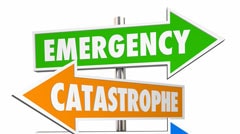Workers’ compensation claims could be catastrophic claims that include burn injuries, spinal cord injuries, acquired head injuries and multiple trauma injuries that make up less than 1% of all workers’ compensation claims but around 20% of total workers’ compensation losses. For evaluating the legal validity of such claims, attorneys have to review the medical records of the claimant, which is usually done with the support of a medical review service provider.
Studies show that the cost of catastrophic injury claims is increasing significantly. Mark Walls, vice president of communications and strategic analysis at Safety National, the largest provider of excess workers’ compensation coverage for self-insured employers in the United States, says that the following factors contribute to this increase.
- Accident survivability is the first factor. Medical advances enable first responders to better stabilize accident victims at the scene, and people are surviving more.
- Advances in medicine have also considerably reduced the complications that arise from catastrophic injuries. This signifies longer life expectancy for those catastrophically injured.
Because of the above factors, mega claims are getting more frequent and larger. Earlier, catastrophic injury claims used to be in the range of $5 million. Now, the claims cost more than $10 million. The workers’ compensation industry has even seen single person injuries with costs in the range of $40 million.
Safety National’s claims data shows that 5 accident causes contribute to 86% of their catastrophic injury claims.
- Motor vehicle accident (24%): Employers who have employees who drive are significantly at risk to exposure for catastrophic injury claims. Typically, these are single vehicle claims where the driver lost control due to road conditions.
- Fall (24%): Most catastrophic injury claims involve a fall from an elevation. Even a simple trip-and-fall could result in a brain injury or spinal cord injury. These types of accidents can happen anywhere – retail settings, schools, or offices.
- Struck by (20%): This could include being struck by machinery, vehicle, falling objects and so on.
- Act of crime (10%): Most of these claims involve police officers being shot in the line of duty, or people working in a retail store or school are shot.
- Burns (8%): In many different occupations ranging from industrial to food service, people are at the risk of severe burns. The costs of these claims are extremely high in the first 2 years because of the need for numerous skin graft surgeries.
- Variety of causes (14%): Brain injuries could be caused by severe food poisoning; or a simple scratch could lead to being infected by flesh-eating bacteria; or medical complications from even minor surgical procedures could lead to brain injury claims.
Typically, claim costs increase when injured workers receive an incorrect diagnosis and inappropriate care. So, the focus must be on providing the right care to the injured worker from medical providers who ensure superior outcomes. Third party administrators, insurers and employers must diligently monitor the medical treatment provided using case management, utilization review, and independent medical exams and ensure the appropriateness of the treatment.
It is important to control workers’ compensation costs and some new developments could prove beneficial in the long run. One of these is the passing of laws that limit the length of opioid prescriptions for acute pain. In some states, the laws require doctors to do more legwork before prescribing opioids – such as taking courses consulting a drug database to make sure the patient has not already got a prescription from another doctor (according to Harvard Medical School). The positive impact is that doctors are now starting to be aggressive about trying to get patients off the opioids.
The present commissioner of the FDA (Food and Drug Administration) has made great efforts to revamp the FDA so that now there is more competition and a conscious effort to keep the prices of drugs down. Besides, a number of generics have been put on the markets – much more than what was seen in recent years in the catastrophic injury scenario. Medical bills can be reduced also by utilizing advanced technology such as wearables, big data and smart algorithms among other innovations. These can keep workers protected from injuries and bring down the costs, says a 2018 report from Accenture.
Insurers such as Safety National utilize reliable medical peer review organizations to assist them in the management of complex catastrophic workers’ compensation claims. They say that the findings show that 29% of the cases they review have been misdiagnosed. Even when the diagnosis is correct, a change in treatment plan is recommended in 60% of the cases. Employers should be cautious about the possibility of catastrophic injury claims in their organization and consult with their workers’ compensation insurers to stay prepared for any possible event.




